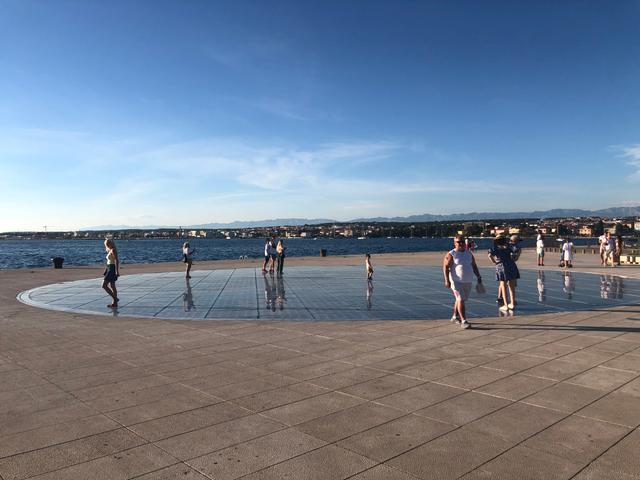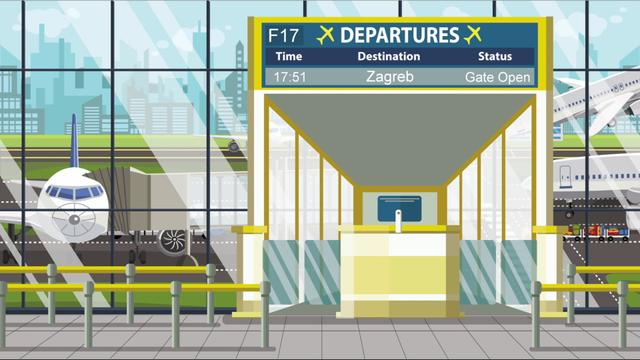Split - Zagreb
Similar popular transfers:
Private transfer from Split to Zagreb
The best way to go and visit Zagreb is to book a private transfer from Split to Zagreb.
MaciTours is a Croatian transfer service which offers the best prices for a private transfer. MaciTours has at its disposal a fleet of luxurious and premium vehicles that will make your transfer as comfortable as possible.
Zagreb is located some 400 km from Split and the duration of your transfer is around 4 hours
While travelling from Split to Zagreb, you may want to visit the National Park Krka, where you will have up to 4 hours of free time to see the Park and explore its natural beauties. Contact MaciTours for rates for this Split to Zagreb via Krka National Park private transfer option.
You may also want to visit the Plitvice Lakes National Park on your way to Zagreb. If you want to visit the Plitvice Lakes and its world-famous waterfalls, choose the Split to Zagreb via Plitvice Lakes National Park private transfer option. How to get from Split to Zagreb?
Every summer You get asked How to get from Split to Zagreb. You need to come fast and easily in Zagreb, capital of Croatia. Like we mentioned above, the fastest and easiest way to get from Split to Zagreb is to book a private transfer from Split to Zagreb with MaciTours, Croatian transfer service. Private transfer between Split and Zagreb You can book easily in less then one minute using our booking form. After You have made a successful booking You don’t need to worry about anything.
That is not the only way How You can get from Split to Zagreb. You can also take a bus which operates daily, average price is between 35-45 euro per person and it drives about 05h30min . Another option is to take taxi directly on the airport but that will be more expensive then private transfer and You don’t know what You can except.
A few facts about Zagreb
Zagreb is the largest city in Croatia and the nation’s capital city.
The city is located in the North-West of Croatia, on the banks of the Sava river and in the foothills of the Medvednica mountain.
The etymology of the name Zagreb is not clear.The older form of the name is Zagrab. The modern Croatian form Zagreb is first recorded in a 1689 map.
There is an old folk legend according to which a city governor was thirsty and ordered a girl named Manda to "scoop" water from the Manduševac well, that today is the fountain on the Ban Jelačić Square, using the imperative: Zagrabi, Mando! ("Scoop, Manda!"), from which the city’s name originates.
Zagreb was initially comprised of two small towns: Gradec, mostly a merchant town and Kaptol, mostly inhabited by clergyman, which later unified into one city.
Zagreb became Croatian Capitol in 1557, with city also being chosen as the seat of the Ban of Croatia in 1621 and from then on it was the seat of the Croatian government.
Since 1877, the Grič cannon is fired daily from the Lotrščak Tower on Grič to mark midday.
In the 19th century, Zagreb was the centre of the Croatian National Revivaland saw the erection of important cultural and historic institutions that now span the old city centre around its many parks.
In 1880 the city was struck by an earthquake that devastated the city and damaged its St. Stephen cathedral, the resting place of many Croatian national heroes and historical people.
During World War II it was bombed by the Allies in 1944 and during the 1991–1995 Croatian War of Independence it was a scene of fighting around the Yugoslavarmy barracks.
In May 1995, it was targeted by Serbian rocket artillery in two rocket attacks, killing seven civilians and wounding many. In these two attacks the seat of Government on St. Mark’s Square in the old town district was also hit, nearly killing the first Croatian President.
Like many other Croatian towns and cities, Zagreb has a turbulent past and has endured many blows, but continues to thrive in spite.
What to see while in Zagreb
Zagreb is an important tourist centre, not only in terms of passengers traveling from the rest of Europe to the Adriatic Sea, but also as a travel destination itself, with visitors being mostly from Austria, Germany, and Italy, and in recent years many tourists from Far East, such as South Korea, Japan or China.
The old town in the northern part of Zagreb is the historical part of the city where most of the citys museums, churches, galleries, restaurants and government buildings are located and is ideal for sightseeing.
The Jelačić square, where the famous statue of ban Jelačić stands, is a perfect starting point for sightseeing as it is located in the centre of the city and from the square to the old town there is only a short walk. From there you can visit St. Mark’s Square where all the government buildings are located, including the Croatian Parliament building.
Tkalčićeva Street with many cafes, bars and restaurants of local and foreign cuisine.
Numerous art exhibitions are also held in the impressive marble Meštrović Pavillion on the Square of the Victims of Fascism, which is the Home of Croatian Fine Artists.
There are also numerous museums in Zagreb, such as the Mimara Museum, the Archeological Museum, and the Museum of Contemporary Art all centred around the city’s many parks and squares.
There are about fourteen big shopping centres in Zagreb and there are numerous restaurants that offer top-quality Croatian wines and gastronomic products.
Numerous festivals take place in Zagreb every year, especially during the summer.
Zagreb is, for instance, the home of the IN music festival, one of the biggest open-air festivals in Croatia which is held every year at the end of June.
Every even-numbered year, the World Festival of Animated Films or Animafest takes place in Zagreb and every odd-numbered year the Music Biennale, the international festival of avant-garde music.
TheFestival of the Zagreb Philharmonic and the flowers exhibition Flora-art at the end of May or beginning of June and the Old-timer Rallyare also annual events that take place in Zagreb.
In the Upper Town, during the summer, theatre performances and concerts are organized either indoors or outdoors, while the stage on Opatovina hosts the Zagreb Histrionic Summer theatre events.
Notable Zagreb souvenirs include thetie or cravat, an accessory named after Croats who wore these characteristic scarves around their necks in the Thirty Years' War in the 17th century and the ball-point pen, a tool developed from the inventions by Slavoljub Penkala, an inventor and a citizen of Zagreb.
The small but delightful Licitar hearts are also a popular souvenir among tourists.


















